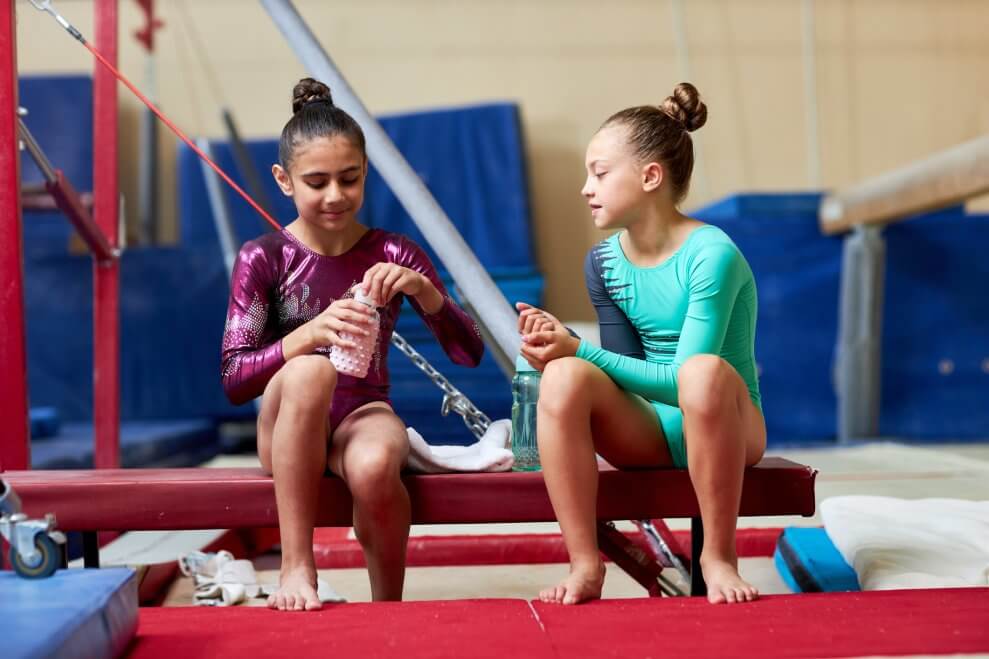
7 ways to help the environment while being active
There are so many ways to get our kids involved in taking care of our planet. While at school or at home, messaging and role modeling can teach them so much about the whys and hows of the importance of helping the environment.
And while they’re being active and taking part in sports, they can make great choices along with their parents and coaches to keep the health of the earth top of mind.
1. Transportation
Getting to games, tournaments, or competitions offers a chance to make a healthy decision to help the planet. Walking, scootering, or cycling instead of driving is both a healthy choice for ourselves and for the environment.
You can speak with your kids about the harmful emissions from cars and the damage they can cause to nature. And if the destination is far from home, carpooling or public transportation are great ways to keep multiple cars off the road.
2. Hydration
According to the Canadian government, Canadians throw away more than three million tonnes of plastic waste every year. “Only 9% is recycled while the rest ends up in our landfills, waste-to-energy facilities or the environment. Plastic waste … threatens the health of the environment including wildlife, rivers, lakes and oceans.”
Plastic water bottles take 450 to 1,000 years to decompose and leak harmful chemicals into the environment as they do. When leaving the house, bring along a reusable water bottle. Or two if you get really thirsty! Also, most recreation and sport centres are now adding fountains. If yours doesn’t have one, ask your municipality to have one installed.

3. Snacks
If you bring snacks to your kids’ games or your team or club has a rotating snack schedule, consider fruit or homemade goods instead of individually wrapped items.
If the snack requires cutlery, bring some from home or use reusable ones. And at the end of snack time, gather any peels, cores, or other leftover food for composting. (And if you need any snack ideas, here’s a list of 30 healthy snacks for active kids.)
4. Litter
Litter not only looks bad, it also poses danger to animals that might eat it as well as to air and water quality. While at a sports field or hiking, have your kids pick up any litter that they’ve dropped (such as tissues or Band-Aids) and have them place it in bins if they’re available or take it home to be disposed of. And if they see any other litter that doesn’t pose harm to them (such as needles), have them pick that up too to keep the environment clean and healthy.
5. Uniforms and equipment
The 5 Rs to zero waste—Refuse, Reduce, Reuse, Repurpose, Recycle—help us to examine many of our practices. And when it comes to kids’ sports supplies, it’s easy to practice being environmentally conscious. Instead of purchasing new equipment every season (or multiple times per season as your kids grow out of their gear!), look for ways to save money and reduce extra products in circulation.
Encourage your kids’ organizations to set up swaps of sporting equipment and uniforms, look for bats and balls at garage sales or thrift shops, check out Facebook groups in your area for swap groups, purchase used pieces from sites such as Craigslist, eBay, or Kijiji, or ask friends and family if they have pieces they’d be willing to part with.
And if your child’s organization is looking for new uniforms, look for companies that use organic, recycled, and Fairtrade-certified materials and practice ethical sourcing and manufacturing.
6. Stay on the trail
When hiking, it’s important to stay on marked trails. Let your kids know that if they walk off the path, they could be stepping on plants and/or eroding the soil.
Eroding the soil could make it difficult for plants to grow. And if you walk on the plants, they could die. Since so many insects and animals feed on these plants, if the plants die, insects and animals will have to move to find new food sources and the ecosystem balance will be disrupted.
Even in the winter, it’s important that everybody stay on the path. While you might not be able to see the plants under the snow or the plants might look dead, they are basically waiting until spring to continue.

7. Save water
After games or practices, your kids might hit the showers at the arena or at home. Let your kids know that every minute they’re in the shower, they’re using about eight litres (33 cups!) of water. While you want your kid to be clean, you can speak with them about taking a minute or two off their shower. Perhaps they can sing one less song while they’re lathering up?
Why is it important to save water? If you look at a world map, it looks like we have so much water. But less than one percent of all the water can be used by humans. We’ve only got a limited supply and humans’, plants’, and animals’ lives depend on it.
What other ways do you consider the environment when you’re being active?



